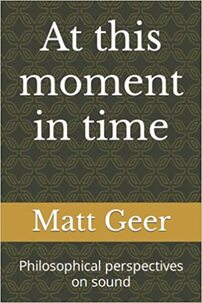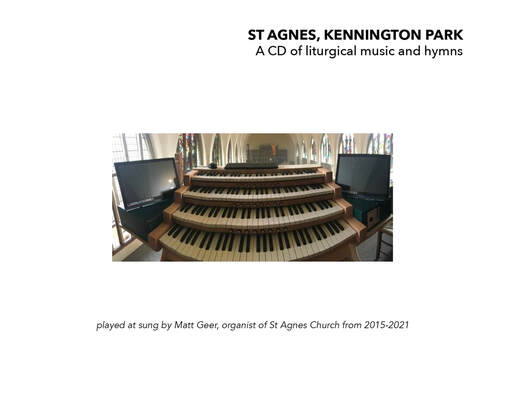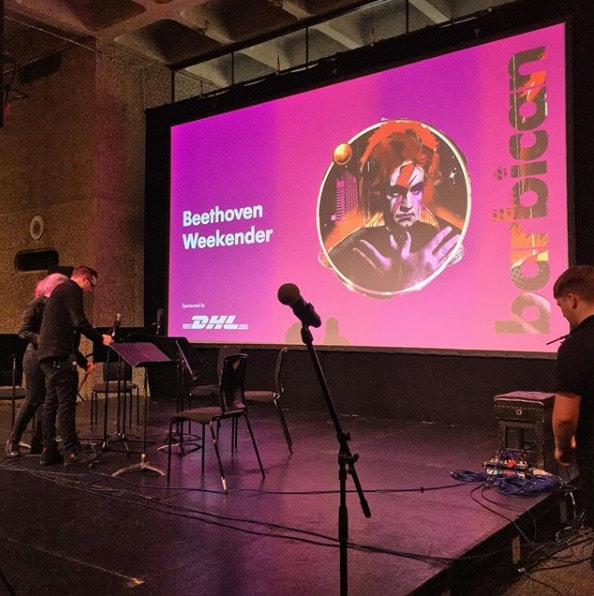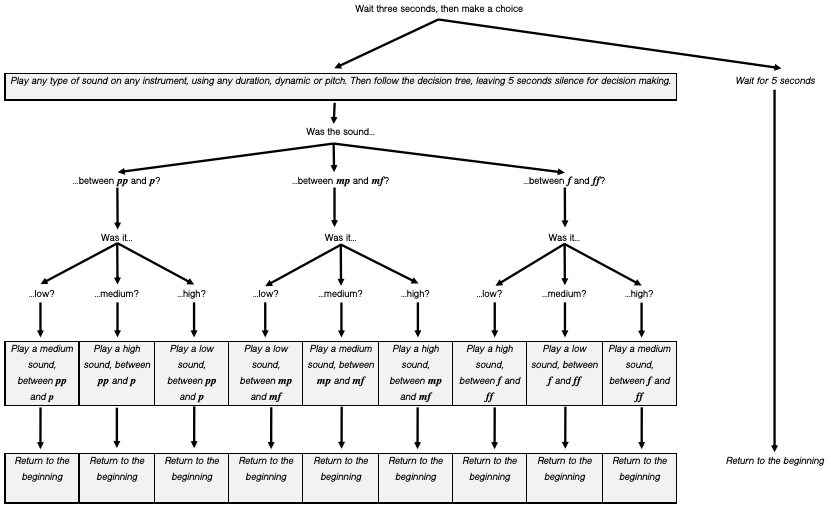New Horizons, Same Old Town
Life’s journey is profoundly cyclic, and with great reverence, I find myself returning to my roots in Hastings, East Sussex. This is where my musical odyssey began, and now, it comes full circle. After honing my craft in composition at the Guildhall School in London and delving into advanced studies with a PhD in music in Northern Ireland, I am honoured to return to my hometown. Here, I have assumed the role of Director of Music at the Old Town Parishes, where I will cherish and play the unchanged 1877 3-manual 'Fr Willis' organ, guide the RSCM junior choir on the Voice for Life scheme, and conduct the SATB adult choir.
Additionally, I have been appointed Executive Producer of the Southern Cathedrals Festival (SCF), a celebrated annual event held in the cathedrals of Winchester, Salisbury, and Chichester Cathedrals.
As I come back to Hastings, I embrace this new chapter with gratitude and dedication, eager to enrich the community with the music that has always been my true home.
Additionally, I have been appointed Executive Producer of the Southern Cathedrals Festival (SCF), a celebrated annual event held in the cathedrals of Winchester, Salisbury, and Chichester Cathedrals.
As I come back to Hastings, I embrace this new chapter with gratitude and dedication, eager to enrich the community with the music that has always been my true home.
Pieta - a venture into electronics
|
Since 2015, I have had a casual interest in writing for electronics and have attempted numerous times with my monodrama 'With Mixed Effects' (2019) and my chamber ensemble work with optional electronics 'Lithium' (2016). However, until now I had never completed a work solely for electronics. The compositional process I took was fairly similar to my acoustic compositions, but the mechanism to make the computer do what I wanted it to do was a steep learning curve.
I was initially inspired by In Memoriam Jon Higgins by Alvin Lucier for clarinet and sine waves, and quickly decided I wanted to restrict myself just to the use of sinusoids. The resultant aesthetic is in a not too dissimilar vein to my prior acoustic works, but definitely adds a different dimension to the listening experience. |
|
Looking back: a tribute to Martin How MBE
|
|
Martin How MBE (1931-2022) was an accomplished organist, composer, and choral conductor who dedicated his life to music and its power to bring people together. He was a respected and influential figure in the world of classical music, and his work with the Royal School of Church Music helped to promote the art of choral singing and raise the profile of church music in the UK and beyond.
In recognition of his contributions to music and education, Martin How was awarded an MBE (Member of the Order of the British Empire) for his services to church music. This honor was a testament to the impact he had on the world of classical music, and his legacy will live on through the countless musicians and music lovers whose lives he touched. I met Martin on numerous occasions, including some memorable dinners at the Little Bay Restaurant in South Croydon. In 2019, I wrote this short setting of Psalm 84 which I dedicated to him, played for him at Croydon Minster during a service of choral Evensong. |
Ludions: A Belfast recital by Anna Gregg (Soprano) and Matt Geer (Piano)
|
On the 10th June 2022 at First Church Belfast, I gave a recital with Anna Gregg (soprano). We performed music on the theme of cyclic narrative and deep listening, inspired by the writings of Pauline Oliveros. The recital included music by Erik Satie, J.S. Bach, Morton Feldman and Jürg Frey alongside two works of my own, one a world premiere. My work, Ludions, was paired with Erik Satie's song cycle of the same name. Both works use the text of the French absurdist poet Léon-Paul Fargue. Together with Anna, we attempted to reduce the feeling of arching narrative in the performance, allowing for the music to ebb and flow, much like the natural consciousness of the listener. |
|
New book release: Temporal philosophies of music
|
I have recently compiled my current writings on music and philosophy into a short and easy-to-read book titled 'At this moment in time: philosophical perspectives on sound'. It is available as paperback or on Amazon Kindle via the link below. How do we experience time? What is a moment? Where does the past end and the future begin? These questions are of growing concerns to composers today, not least set in motion by a direction towards formulations of listening practices by musicians. My own music postulates upon these questions somewhat to the extreme, generally inspired by phenomenological thought. This book provides a short outline of current phenomenological thought on human consciousness and how this might shape music today. |
At this moment in time: Philosophical perspectives on sound
|
What is a moment? How do we experience time? Where does the past stop and the future begin?
These are questions that I have constantly pondered on over the last few years, and my reasoning has dramatically altered my compositional practice. At this moment in time is taken from my philosophies on the listening and creation of music. It is part of a larger literature work 'At this moment in time: Philosophical perspectives on sound'. |
|
Asleep in Christ | a new work for piano
|
|
I have been long fascinated with consciousness and stasis. For Christians, the state of consciousness between the death and resurrection of the soul is still something of a mystery and is regularly debated. The Bible talks about a state of sleep before resurrection and the second coming. 1 Thessalonians 4:41 says "For if we believe that Jesus died and rose again, even so God will bring with Him those who sleep in Jesus" (KJV). In this state of sleep, all understanding of momentary experience and time must be disbanded. Rather, we live in a state that I like to describe as 'celestial time'. In earthly time, the present is an amalgamation of the past and future (memory and anticipation). However, in celestial time, one exists in a single momentary state; the present is unaccompanied by the past and future. This singular moment is either 'on' or 'off', one cannot look forward or backward. Only on earth can consciousness comprehend a sense of 'waiting', rather to be asleep in Christ is to be at one with Him, resting until the day of judgement.
This work provides an abstracted portrayal of a consciousness being asleep in Christ, confied by the listener's earthly temporal consciousness. |
Slowing up and Speeding Down (2) | a series of new compositions
|
I recently completed a set of works that may be played in a variety of orchestrations:
- Slowing Up and Speeding Down (1), for piano - Slowing Up and Speeding Down (2), for any keyboard instrument - Slowing Up and Speeding Down (2), for four unspecified instruments - Slowing Up and Speeding Down (2), for string quartet Compatibility: - Slowing Up and Speeding Down (1) is a stand-alone work for piano. - The Slowing Up and Speeding Down (2) series (for any keyboard instrument, four unspecified instruments and string quartet) may be played as stand-alone works or simultaneously, either metrically synchronised or unsynchronised. If versions are played unsynchronised, the individual players of their version must synchronise, but groups of players between the versions may play unsynchronised. They should start gesturally at the same time, but the music ends when the last group finishes their notated music. |
(Note: this recording does not include repeats. With repeats, the work is c. 40 minutes)
|
A catalogue of organ works | Harvard University Memorial Church
I am extremely grateful to the USA organist and composer Carson Cooman for his dedication to recording numerous organ works that I have written over the past 5-years. Cooman is composer-in-residence at Harvard University Memorial Church and is a prolific composer himself. Below is a few of his fantastic recordings and interpretations of my works:
|
|
|
|
|
'Ludions' fundraiser | a new song cycle for soprano and piano
|
|
Please support this project by sharing and donating to this link: https://gofund.me/eab82f1a
I'm currently looking to raise money and support for my new song cycle, 'Ludions' which takes the listener's on a temporal journey through short musical songs. The work is inspired by Erik Satie's 1923 song cycle of the same name, and the project is a collaboration between myself and the Northern Irish soprano Anna Gregg. The donations will go towards rehearsal and performance venue hire, recording equipment and logistics. But, what will you get out of it? If we are lucky enough to raise enough money, we'll be broadcasting the song-cycle in concert to all of our supporters and your name will appear on the published score! www.mattgeer.co.uk www.annagregg.com |
Matt's Mental Health Story - Just Another Illness charity
|
I was approached for an interview by the charity 'Just another illness' to talk about having a diagnosis of schizoaffective disorder and how we, as a society, can create a more positive and open dialogue about mental health |
|
Bluebells of Scotland | composition for celesta (2021)
|
I wrote this short work in September 2021, inspired by the pre-compositional material of Milton Babbitt. The arrays are going in a different trajectory to pre-compositional work that I regularly deal with, but I felt content with the results.
I recorded the work in Belfast on a Yamaha Celesta. |
|
(f/h)our hands | composition for two pianos (2021)
(f/h)our hands is a combinatorial work for two pianos written in Aug/Sep 2021. This composition is inspired by a quote by Bryn Harrison:
"It’s like looking at the hands on a clock...you can’t see that something is in motion but there’s an invisible transformation taking place. I wanted the shifts to be very subtle, for the listeners to arrive somewhere else without realising the journey they’ve made." - Bryn Harrison on shifting light (2006)
A score can be found below:
"It’s like looking at the hands on a clock...you can’t see that something is in motion but there’s an invisible transformation taking place. I wanted the shifts to be very subtle, for the listeners to arrive somewhere else without realising the journey they’ve made." - Bryn Harrison on shifting light (2006)
A score can be found below:
New CD of organ music recorded on the organ of St Agnes, Kennington Park
|
From September 2015 until September 2021, I was Director of Music at St Agnes Church, Kennington Park in London. For my departure, I recorded a CD of organ music to be sold at the Church. If you are interested in purchasing a copy, please e-mail [email protected]. The CDs are priced at £10, with all profits going to the Church.
Track list: 1. Jesu, Joy of Man’s Desiring (J.S. Bach) 2. Father of heav’n, whose love profound 3. For the beauty of the earth (J. Rutter) 4. Now sleeps the crimson petal (R. Quilter) 5. Soul of my Saviour 6. Pari Intervallo (A. Pärt) 7. Spiegel im Spiegel (A. Pärt) 8. Cantique (E. Elgar) 9. Imperial March (E. Elgar) 10. Strumming Pattern (M. Geer) 11. Augustine’s Time (M. Geer) 12. Toy town Trumpeters (W. Davies) 13. Washington Post March (J. Sousa) |
TEDx Talk - How schizophrenia can teach us to listen
|
|
As part of the international TEDx talks series, I was invited to give a talk in Belfast (this time online due to coronavirus restrictions) on how schizophrenia can teach us to listen. The short presentation explores my own experience with mental health as well as what we might be able to learn from people suffering from conditions such as bipolar, schizophrenia and psychosis. I hope that you enjoy! |
Barbican debut - Beethoven 250 commission
|
As part of the Barbican's Beethoven 250 weekender, I was asked to write a piece for the event, in collaboration with the Barbican centre and GSMD. This was performed by the Lakeside Brass Quintet and Stephanie Foster (Soprano) on the 2nd of February on the Barbican FreeStage. It was a great turn out and wonderful opportunity to meet some fantastic musicians!
The piece I wrote Since we have no clues was a response to Beethoven's conversation books, speculating what the composer may have responded to questions written down in a notebook, due to his deafness. An web archive to the event can be found below: https://www.barbican.org.uk/whats-on/2020/event/beethoven-weekender-weekend-tickets |
With Mixed Effects - a new monodrama for 2020
|
|
With Mixed Effects is a 90-minute meditative monodrama set over the final three minutes of a person killing themselves by nitrogen asphyxiation. Written in mid-2019, the piece is inspired by the composers personal dealings with mental health. He writes:
"I didn't want to incorporate any thoughts or emotions into the dialogue specifically. The piece embodies the illness by using the body as an empty shell in which it self-destructs. Audience members are encouraged to meditate and immerse themselves into ones mindset as if they were experiencing suicidal ideation. The piece ends with a guided meditation." |
Sane and Sound - a new chamber opera for 2019
Sane and Sound is a new chamber opera on schizophrenia, bipolar, major depressive disorder and psychosis. Based on real accounts of psychotic illnesses and mood disorders, the piece draws upon our relationship towards delusions and hallucinations whilst not taking away from the authenticity of what really goes on for the sufferer.
|
Performances in 2019
Wednesday 17th April (Milton Court Theatre) Video recording featured to the right Friday 12th July (West Smithfield - Culture Mile Festival) Wednesday 7th August (Arcola Theatre, Dalston - Grimeborne Opera Festival) |
|
All Sounds? - Writing for percussion
|
The idea of maximal diversity has been inherent in my compositions for the past few years. An intrinsic feature of any combinatorial system or permutational system is the inclusion of every possible way of presenting objects as a group. Investigating this further, I was fortunate enough to have my piece All Sounds? workshopped by the American percussion Trio Line Upon Line during their visit to London in 2019. https://www.lineuponlinepercussion.org/ |



